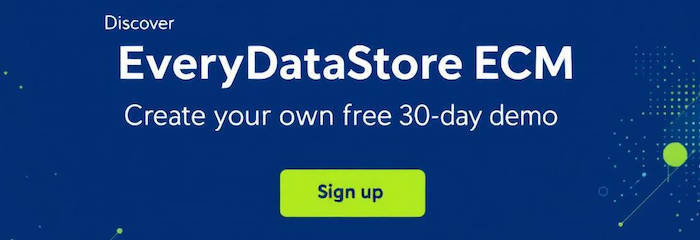This guide walks you through the installation of the EveryDataStore ECM backend using Composer, the most popular dependency manager for PHP. Composer ensures a clean and modular setup, allowing you to manage all backend dependencies efficiently.
To begin, you’ll need a working PHP environment, Composer installed on your system, and access to a MySQL database. Simply follow the step-by-step instructions provided below to configure your local or server environment for a full backend setup.
For containerized environments, we also provide an alternative Docker installation guide.
Installation Guide Using Composer
1. Create a new Project with Composer
composer create-project everydatastore/everydatastorebackend /var/www/project_directory/
2. Go to your project directory:
cd /var/www/project_directory/
3. Copy the file .env.example to .env:
cp .env.example .env
4. Open the file .env and edit it:
vi .env
SS_DATABASE_SERVER="localhost"
SS_DATABASE_NAME="Database name"
SS_DATABASE_USERNAME="Database username"
SS_DATABASE_PASSWORD="Database userpassword"
SS_DEFAULT_ADMIN_USERNAME="admin"
SS_DEFAULT_ADMIN_PASSWORD="adminpassword"
5. Open the file everydatastore/_config/everydatastore.yml and edit the following settings:
default_member:
email: 'member@example.com'
password: 'mypassword'
asset_viewer_member:
email: 'viewer@example.com'
password: 'mypassword'
cron_member:
email: 'cron@example.com'
password: 'mypassword'
everydatastore_tmp_dir_path: '{full_path_to_your_project_directory}/tmp'
6. Make the following directories and files writeable (recursive) and owned by www-data:
- public/assets/
- public/_graphql
- .graphql-generated
- silverstripe-cache
- tmp
- log
7. Run in your browser the following URL:
http://yourbackendhost/dev/build/?flush=1
8. Log in to the backend:
http://yourbackendhost/admin
9. Go To Admin-Backend:
*** Please follow these important steps to set up your datastore correctly.***
9.1 Edit your datastore name and click the Save button. Then edit the datastore configurations and settings.
9.2 Add the users (default_member, asset_viewer_member, and cron_member) to the Administrators group..
http://yourbackendhost/admin/EveryDataStore
10. Create cron jobs for EveryDataStore ECM (you can do this part later):
All cron jobs for EveryDataStore ECM are in {full_path_to_your_project_directory}/everydatastore/cron/cronjobs.txt





